#conservation of biodiversity
Explore tagged Tumblr posts
Text
"Once thought to be extinct, black-footed ferrets are the only ferret native to North America, and are making a comeback, thanks to the tireless efforts of conservationists.
Captive breeding, habitat restoration, and wildlife reintegration have all played a major role in bringing populations into the hundreds after near total extinction.
But one other key development has been genetic cloning.
In April [2024], the United States Fish and Wildlife Service announced the cloning of two black-footed ferrets from preserved tissue samples, the second and third ferret clones in history, following the birth of the first clone in December 2020.
Cloning is a tactic to preserve the health of species, as all living black-footed ferrets come from just seven wild-caught descendants. This means their genetic diversity is extremely limited and opens them up to greater risks of disease and genetic abnormalities.

Now, a new breakthrough has been made.
Antonia, a black-footed ferret cloned from the DNA of a ferret that lived in the 1980s has successfully birthed two healthy kits of her own: Sibert and Red Cloud.
These babies mark the first successful live births from a cloned endangered species — and is a milestone for the country’s ferret recovery program.
The kits are now three months old, and mother Antonia is helping to raise them — and expand their gene pool.
In fact, Antonia’s offspring have three times the genetic diversity of any other living ferrets that have come from the original seven ancestors.
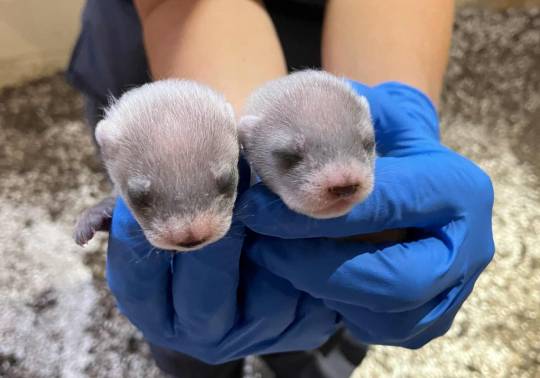
Researchers believe that expanded genetic diversity could help grow the ferrets’ population and help prime them to recover from ongoing diseases that have been massively detrimental to the species, including sylvatic plague and canine distemper.
“The successful breeding and subsequent birth of Antonia's kits marks a major milestone in endangered species conservation,” said Paul Marinari, senior curator at the Smithsonian’s National Zoo and Conservation Biology Institute.
“The many partners in the Black-footed Ferret Recovery Program continue their innovative and inspirational efforts to save this species and be a model for other conservation programs across the globe.”
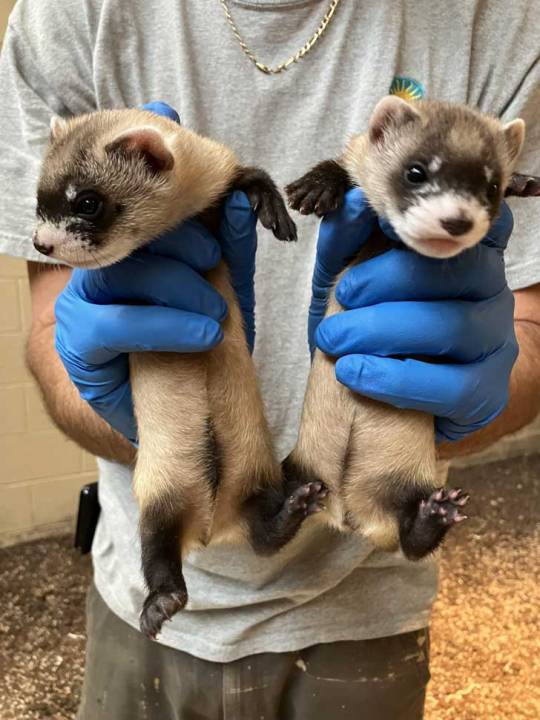
Antonia actually gave birth to three kits, after mating with Urchin, a 3-year-old male ferret. One of the three kits passed away shortly after birth, but one male and one female are in good health and meeting developmental milestones, according to the Smithsonian.
Mom and babies will remain at the facility for further research, with no plans to release them into the wild.
According to the Colorado Sun, another cloned ferret, Noreen, is also a potential mom in the cloning-breeding program. The original cloned ferret, Elizabeth Ann, is doing well at the recovery program in Colorado, but does not have the capabilities to breed.
Antonia, who was cloned using the DNA of a black-footed ferret named Willa, has now solidified Willa’s place as the eighth founding ancestor of all current living ferrets.
“By doing this, we’ve actually added an eighth founder,” said Tina Jackson, black-footed ferret recovery coordinator for the U.S. Fish and Wildlife Service, in an interview with the Colorado Sun.
“And in some ways that may not sound like a lot, but in this genetic world, that is huge.”
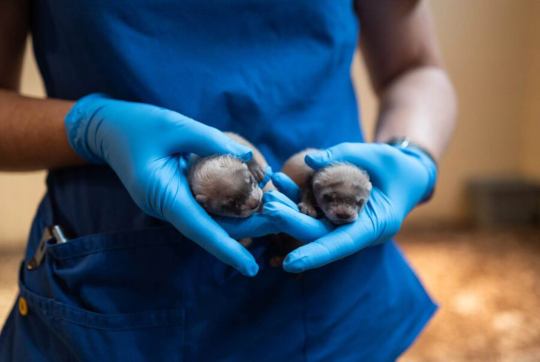
Along with the USFWS and Smithsonian, conservation organization Revive & Restore has also enabled the use of biotechnologies in conservation practice. Co-founder and executive director Ryan Phelan is thrilled to welcome these two new kits to the black-footed ferret family.
“For the first time, we can definitively say that cloning contributed meaningful genetic variation back into a breeding population,” he said in a statement.
“As these kits move forward in the breeding program, the impact of this work will multiply, building a more robust and resilient population over time.”"
-via GoodGoodGood, November 4, 2024
#ferret#ferrets#mustelid#black footed ferret#conservation#endangered species#conservation biology#biodiversity crisis#dna#genetics#cloning#good news#hope#hope posting#hopecore#hopepunk
9K notes
·
View notes
Text
#importance of biodiversity#biodiversity#types of biodiversity#biodiversity for kids#what is biodiversity#education#biodiversity conservation#loss of biodiversity#why is biodiversity important#biodiversity and conservation#educational video for children#conservation of biodiversity#definition of biodiversity#importance of water#example of biodiversity#the value of biodiversity#origin of biodiversity#biodiversity definition#benefits of biodiversity
0 notes
Text
Endangered Species Sightings from This Year
This is thought to be the first time in over 20 years that a blue whale was spotted off the Coast of Massachusetts.
I highly recommend watching the video and listening to the reaction of the people on the whale watching boat--the cheers and emotion in some of their voices, especially the woman saying "I'm trying not to" when someone jokingly tells her not to cry.
This is the first time ever that a mother clouded leopard with two cubs has been spotted on a game cam!
"After being considered regionally extinct for over a century, giant anteaters have been spotted roaming once again in Brazil's Rio Grande do Sul state. Scientists have concluded these returned natives ventured over from Argentina's Ibera Park, where conservationists have released around 110 rescued and captive-bred anteaters since 2007."
Over 100 years and the anteaters are finally coming home!
#conservation#animal conservation#biodiversity#good news#environment#whale conservation#wolverine conservation#anteater conservation#rainforest conservation#ocean conservation#hope#optimism#radical optimism#positivity#ecoanxiety#climate anxiety#cat conservation#clouded leopard conservation#zoos prevent extinction
3K notes
·
View notes
Text
Yo this rules and is genuinely uplifting
17K notes
·
View notes
Text

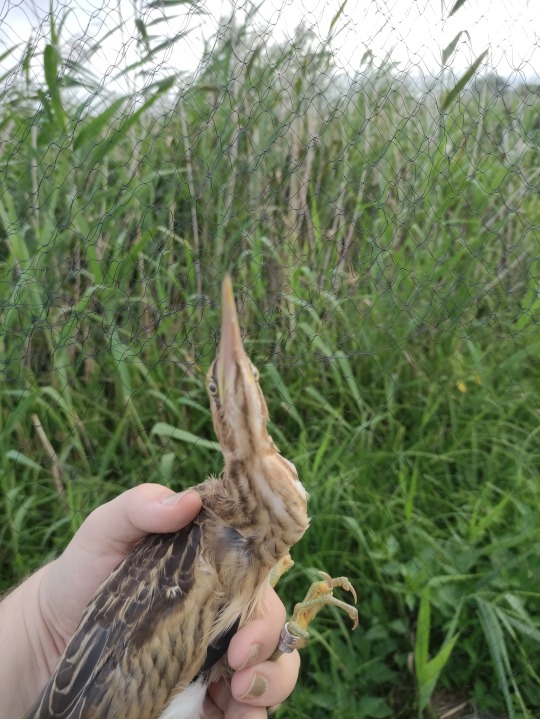

During my internship, I saw another strange fellow. If you like the neck flexibility of the European wryneck you sure gonna love the Little bittern (Ixobrychus minutus). This bird is in the heron family (Ardeidae) but loves to shrink itself. But be warned ! They know where your eyes are and can launch their neck and beak real fast ! One tried to attack me while I was checking its ring and I was lucky to be just 10 cm too far. Despite this vicious attack I love this funny bird and he was quite easy to untangle and to ring. With colleagues, we nicknamed it the "Accordion of death"
6K notes
·
View notes
Text
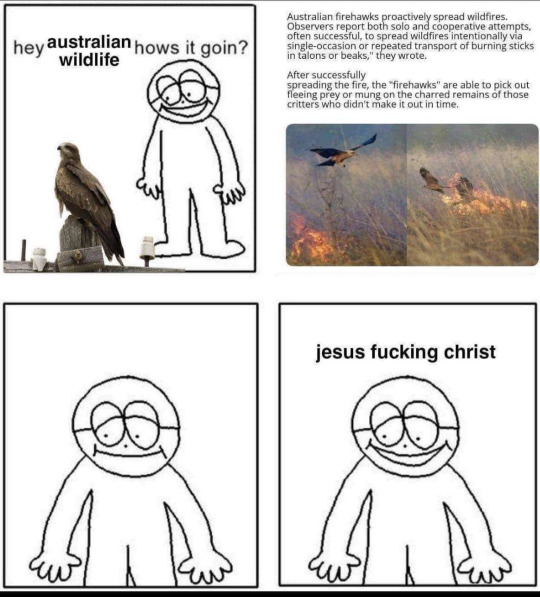
#green memes for ecological fiends#zoology#ecology#bird#hawks#environmental science#biodiversity#conservation biology#conservation#wildlife
29K notes
·
View notes
Text
🦇Museum Curator of Mammalogy Angelo Soto-Centeno shares updates from his recent expedition to Puerto Rico, where he and a team of local and international researchers led a paleontological excavation and bat diversity inventory. The aim of this work was to explore new locations to examine the present, or living, and past, or fossil, communities of bats and identify species that have become extinct in recent times.
They found three species of extinct bats that were lost in the last 4,000 to 1,600 years—including insectivore and nectarivore bats!
#science#amnh#museum#fossil#nature#natural history#animals#fact of the day#did you know#bats#ghost faced bat#mammalogy#stem#research#conservation#biodiversity#paleontology
454 notes
·
View notes
Text

#pagan#witch#paganism#dark#neopagan#wiccan#gardening#ecofriendly#ecology#conservation#environment#environmentalism#biodiversity
2K notes
·
View notes
Text
This is a pretty big deal. When I was a kid in the 1980s, this was one of the most endangered species in the world. It had been declared extinct in 1979, but two years later a small population was discovered in Wyoming. These became the basis for a breeding and reintroduction program, and today there are a few hundred in the wild with more in captive breeding programs.
The challenge with working with such a small captive population is that you only have so many adult female ferrets that can be having kits at any given time. While cloning is more resource-intensive than simply raising a ferret born in captivity, it adds another individual to the breeding pool. If cloning can be streamlined, it could help increase the number of breeding adult ferrets more quickly than through natural means alone.
In this case, one of the first cloned black-footed ferrets has not only made it to adulthood but has successfully given birth to two kits which wouldn't have existed otherwise. Because she was cloned from the cells of a ferret that died in the 1980s, she was able to reintroduce genetic diversity in a species that has suffered a severe population bottleneck. While it remains to be seen whether the kits survive to adulthood--a challenge any young ferret faces--this is a very promising sign.
We can't rely on cloning alone to save this species, though. The systematic destruction of prairie habitats for agriculture and other development, the subsequent loss of prey populations, the introduction of canine distemper from domestic dogs, and secondary poisoning from poisoned prairie dogs and other prey, all have contributed to the precipitous decline of this charismatic little mustelid. By preserving and restoring prairie habitats and their biodiversity, preventing the poisoning of prey, and controlling canine distemper vectors, we can give both birthed and cloned black-footed ferrets a better chance of reestablishing their species in their historic range.
#black-footed ferret#black footed ferret#ferrets#mustelids#weasels#endangered species#extinction#biodiversity#conservation#environmentalism#restoration ecology#nature#wildlife#animals#ecology#environment#science#cloning
382 notes
·
View notes
Text
Dandelion News - January 15-21
Like these weekly compilations? Tip me at $kaybarr1735 or check out my Dandelion Doodles!
1. Landmark debt swap to protect Indonesia’s coral reefs

“The government of Indonesia announced this week a deal to redirect more than US$ 35 million it owes to the United States into the conservation of coral reefs in the most biodiverse ocean area on Earth.”
2. [FWS] Provides Over $1.3 Billion to Support Fish and Wildlife Conservation and Outdoor Access

“Through these combined funds, agencies have supported monitoring and management of over 500 species of wild mammals and birds, annual stocking of over 1 billion fish, operations of fish and wildlife disease laboratories around the country, and provided hunter and aquatic education to millions of students.”
3. Philippine Indigenous communities restore a mountain forest to prevent urban flooding

“Indigenous knowledge systems and practices are considered in the project design, and its leaders and members have been involved throughout the process, from agreeing to participate to identifying suitable land and selecting plant species that naturally grow in the area.”
4. Responsible Offshore Wind Development is a Clear Win for Birds, the U.S. Economy, and our Climate

“[T]he total feasible offshore wind capacity along U.S. coasts is more than three times the total electricity generated nationwide in 2023. […] Proven strategies, such as reducing visible lights on turbines and using perching deterrents on turbines, have been effective in addressing bird impacts.”
5. Illinois awards $100M for electric truck charging corridor, Tesla to get $40M

“The project will facilitate the construction of 345 electric truck charging ports and pull-through truck charging stalls across 14 sites throughout Illinois[…. E]lectrifying [the 30,000 daily long-haul] trucks would make a huge impact in the public health and quality of life along the heavily populated roadways.”
6. Reinventing the South Florida seawall to help marine life, buffer rising seas
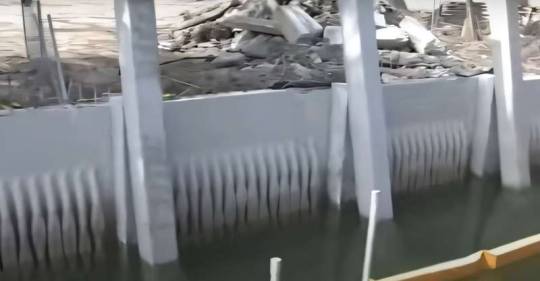
“[The new seawall] features raised areas inspired by mangrove roots that are intended to both provide nooks and crannies for fish and crabs and other marine creatures and also better absorb some of the impact from waves and storm surges.”
7. Long Beach Commits to 100% All-Electric Garbage Trucks
“[Diesel garbage trucks] produce around a quarter of all diesel pollution in California and contribute to 1,400 premature deaths every year. Electric options, on the other hand, are quieter than their diesel counterparts and produce zero tailpipe emissions.”
8. ‘This Is a Victory': Biden Affirms ERA Has Been 'Ratified' and Law of the Land

“President Joe Biden on Friday announced his administration's official opinion that the amendment is ratified and its protections against sex-based discrimination are enshrined in the U.S. Constitution.”
9. A Little-Known Clean Energy Solution Could Soon Reach ‘Liftoff’

“Ground source heat pumps could heat and cool the equivalent of 7 million homes by 2035—up from just over 1 million today[…. G]eothermal energy is generally considered to be more popular among Republicans than other forms of clean energy, such as wind and solar.”
10. Researchers combine citizens' help and cutting-edge tech to track biodiversity

“Researchers in the project, which runs from 2022 to 2026, are experimenting with tools like drones, cameras and sensors to collect detailed data on different species, [… and] Observation.org, a global biodiversity platform where people submit pictures of animals and plants, helping to identify and monitor them.”
January 8-14 news here | (all credit for images and written material can be found at the source linked; I don’t claim credit for anything but curating.)
#good news#hopepunk#nature#national debt#coral reef#conservation#funding#fish and wildlife#philippines#indigenous#agroforestry#green infrastructure#offshore wind#wind energy#electric vehicles#illinois#florida#sea wall#habitat#california#equal rights#human rights#us politics#geothermal#biodiversity#citizen science#climate change#invasive species#endangered species#clean energy
250 notes
·
View notes
Text
Conservation efforts directed towards just 0.7% of the world's land mass could help protect one third of the world's threatened and unique tetrapod (four-limbed vertebrate) species, new research by Imperial College London, On the Edge, and ZSL has shown. The study, led by researchers at Imperial College London and published this week in Nature Communications, finds that large gains in conservation are possible by focusing on areas home to exceptional biodiversity and species with high levels of evolutionary distinctiveness and global endangerment.
Continue Reading.
193 notes
·
View notes
Text
"In 2021, scientists in Guelph, Ontario set out to accomplish something that had never been done before: open a lab specifically designed for raising bumble bees in captivity.
Now, three years later, the scientists at the Bumble Bee Conservation Lab are celebrating a huge milestone. Over the course of 2024, they successfully pulled off what was once deemed impossible and raised a generation of yellow-banded bumble bees.
The Bumble Bee Conservation Lab, which operates under the nonprofit Wildlife Preservation Canada, is the culmination of a decade-long mission to save the bee species, which is listed as endangered under the Xerces Society for Invertebrate Conservation...
Although the efforts have been in motion for over a decade, the lab itself is a recent development that has rapidly accelerated conservation efforts.
For bee scientists, the urgency was necessary.
“We could see the major declines happening rapidly in Canada’s native bumble bees and knew we had to act, not just talk about the problem, but do something practical and immediate,” Woolaver said.
Yellow-banded bumble bees, which live in southern Canada and across a huge swatch of the United States, were once a common species.

However, like many other bee species, their populations declined sharply in the mid-1990s from a litany of threats, including pathogens, pesticides, and dramatic habitat loss.
Since the turn of the century, scientists have plunged in to give bees a helping hand. But it was only in the last decade that Woolaver and his team “identified a major gap” in bumble bee conservation and set out to solve it.
“No one knew how to breed threatened species in captivity,” he explained. “This is critically important if assurance populations are needed to keep a species from going extinct and to assist with future reintroductions.”
To start their experiment, scientists hand-selected wild queen bees throughout Ontario and brought them to the temperature-controlled lab, where they were “treated like queens” and fed tiny balls of nectar and pollen.
Then, with the help of Ontario’s African Lion Safari theme park, the queens were brought out to small, outdoor enclosures and paired with other bees with the hope that mating would occur.
For some pairs, they had to play around with different environments to “set the mood,” swapping out spacious flight cages for cozier colony boxes.
And it worked.
“The two biggest success stories of 2024 were that we successfully bred our focal species, yellow-banded bumble bees, through their entire lifecycle for the first time,” Woolaver said.
“[And] the first successful overwintering of yellow-banded bumble bees last winter allowed us to establish our first lab generation, doubling our mating successes and significantly increasing the number of young queens for overwintering to wake early spring and start their own colonies for future generations and future reintroductions.”
Although the first-of-its-kind experiment required careful planning, consideration, resources, and a decade of research, Woolaver hopes that their efforts inspire others to help bees in backyards across North America.
“Be aware that our native bumble bees really are in serious decline,” Woolaver noted, “so when cottagers see bumble bees pollinating plants in their gardens, they really are seeing something special.”"
-via GoodGoodGood, December 9, 2024
#bees#insect#save the bees#xerces society#biodiversity#conservation#endangered species#wildlife conservation#canada#north america#climate action#climate news#good news#hope
6K notes
·
View notes
Text


Lady, that is quite the ovipositor O_O Wasp in genus Gasteruption, Northern California
#wasp#Gasteruption#bug#nature#nature photography#biodiversity#bugblr#animals#inaturalist#arthropods#entomology#insect appreciation#invertebrates#macro photography#pollinators#pollination#ovipositor#hymenoptera#macro#creature#don't let the stinger scare you#they're very docile#although still shouldn't handle them#robot#alien#nature core#conservation#california wildlife#bay area#coyote bush
137 notes
·
View notes
Text
I need you all to appreciate how crazy it is to have watched the scimitar horned oryx go from a poster child for "it only exists in zoos" to merely endangered (not even critically endangered!) over my lifetime.
So many heroic people contributed ridiculous amounts of time and effort to make this captive breeding and reintroduction effort a success.
#conservation#biodiversity#good news#hope#reintroduction#endangered species#animal conservation#zoos prevent extinction#captive breeding#environment#positive news#positivity
3K notes
·
View notes
Text
How Non-Native Plants Are Contributing to a Global Insect Decline
The impact of introduced plants on native biodiversity has emerged as a hot-button issue in ecology. But recent research provides new evidence that the displacement of native plant communities is a key cause of a collapse in insect populations and is affecting birds as well...
#non-native plants#invasive species#environment#conservation#insect decline#insect#insects#entomology#biodiversity#animals#nature#botany#plants#non-native invasive species
1K notes
·
View notes
Text



European wryneck (Jynx torquilla) got its name from the behaviour of its youngs. They nest in tree-holes and when a predator tries to come near the babies move their head to mimic a snake. They also ruffle their head-feathers to push further the snake impersonation !
This mimicry added to their bark-like feathers makes them one of the most weird impressive bird I saw during my internship !
5K notes
·
View notes